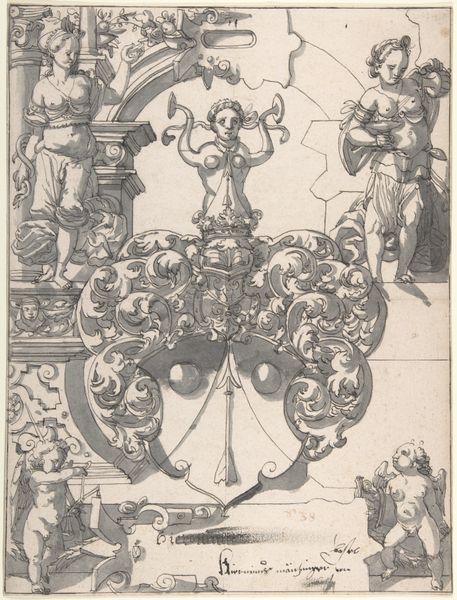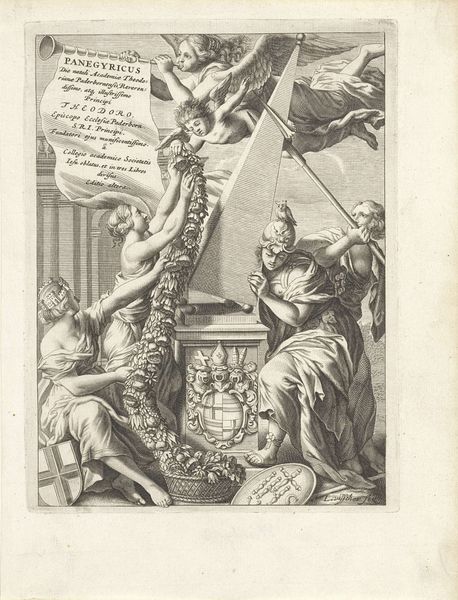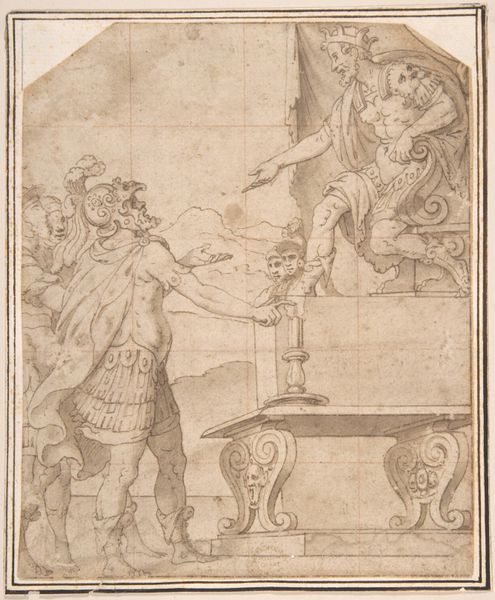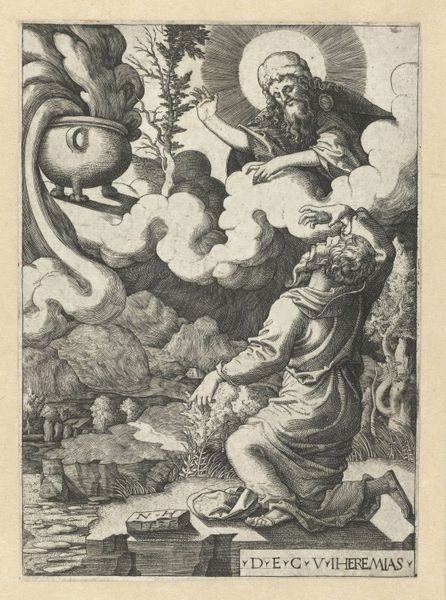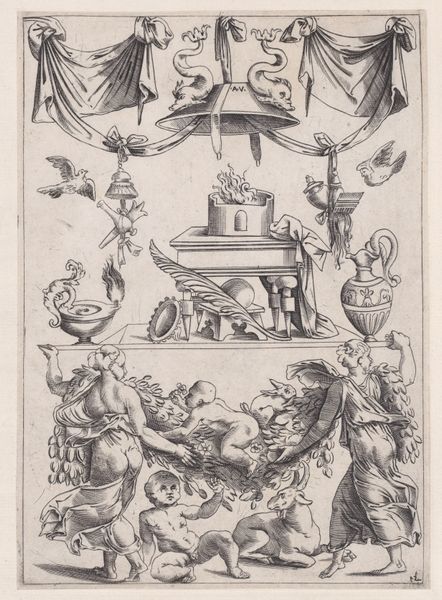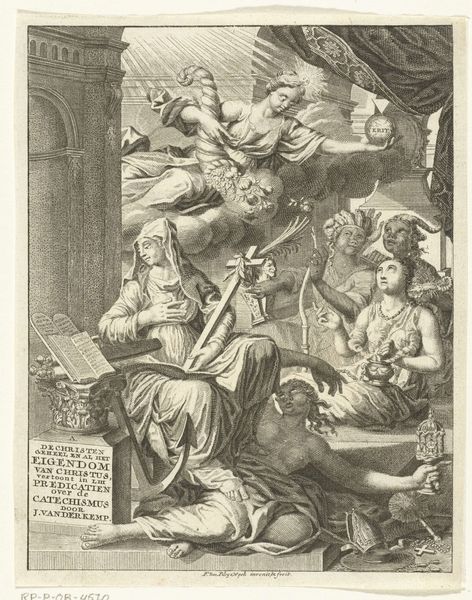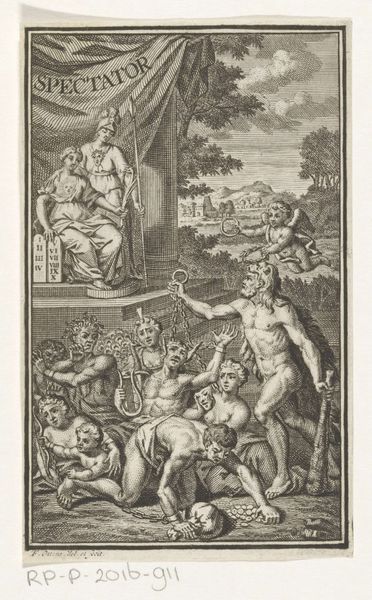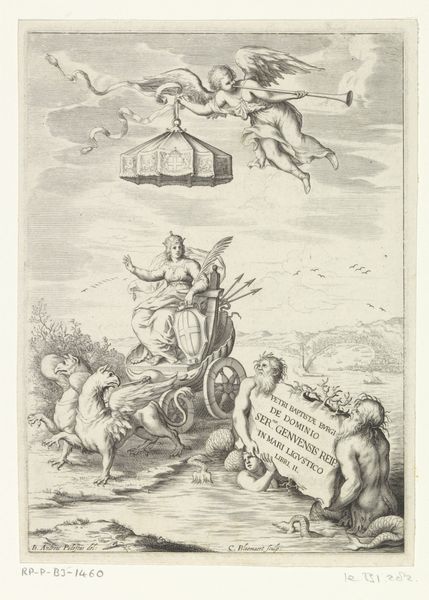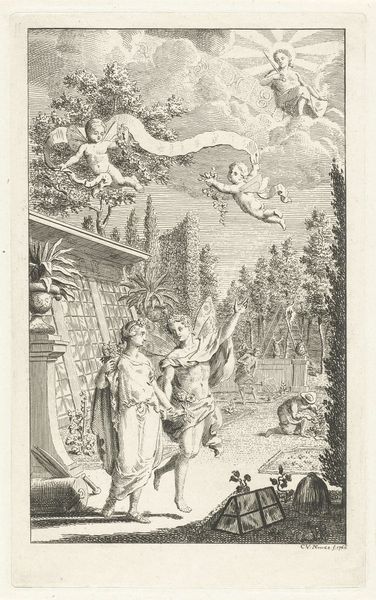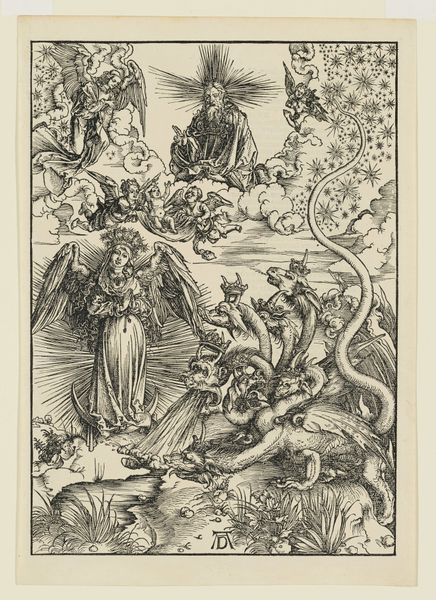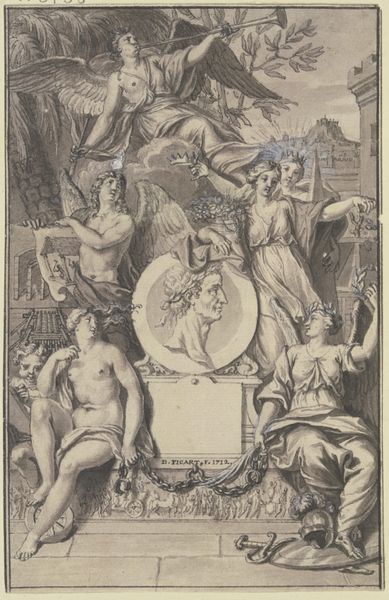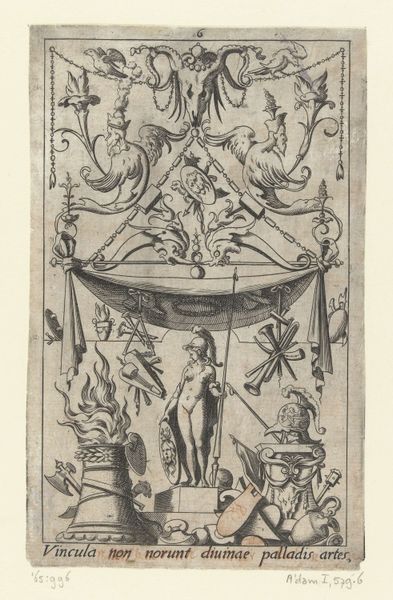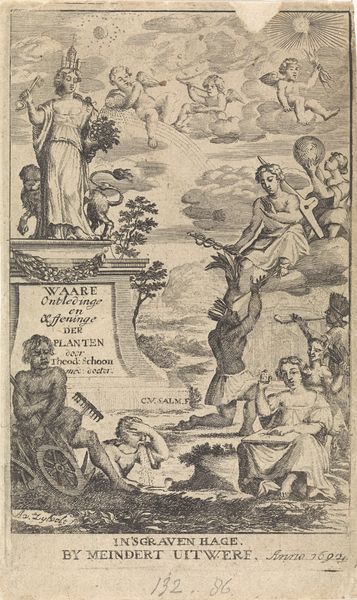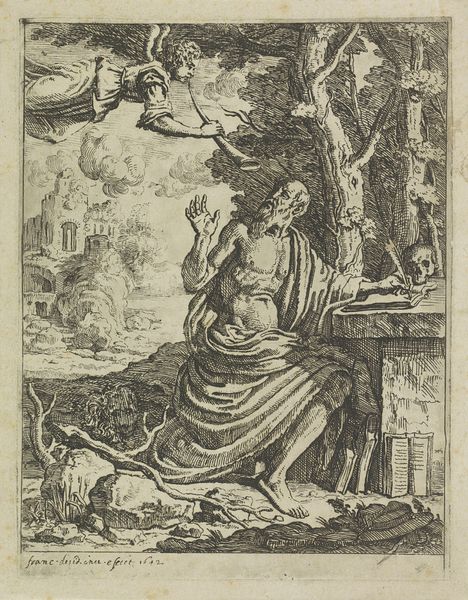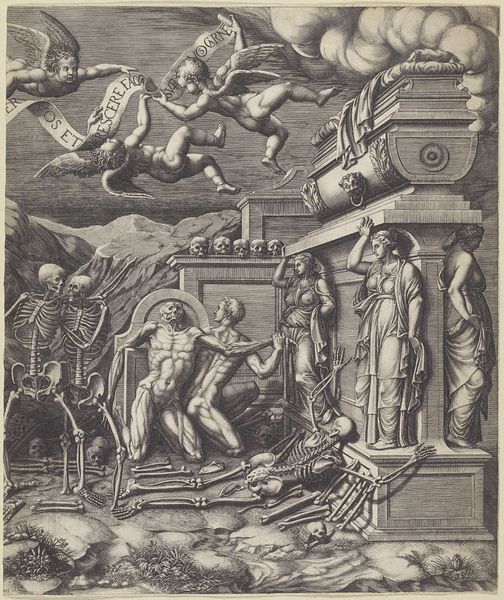
drawing, print, paper, ink, pen, architecture
#
drawing
#
allegory
#
baroque
# print
#
figuration
#
paper
#
ink
#
line
#
pen
#
cityscape
#
academic-art
#
architecture
Dimensions: 255 × 169 mm
Copyright: Public Domain
Editor: Here we have an intriguing drawing, “Frontispiece to Book of Architectural Studies,” its creator remains anonymous. The artwork contains figures and a classical column, crafted with pen and ink on paper. The detailed lines and allegorical figures create an interesting mood. What do you see when you look at this work? Curator: I see a reflection of power dynamics embedded within architectural knowledge and its dissemination. This drawing speaks to me about how authority is constructed through visual representation, particularly during a time of rigid social structures. Notice how the architectural elements, like the column, are entwined with mythological figures. Can we see those elements as embodiments of specific social roles or ideologies that were being promoted or challenged during that period? Editor: I hadn't considered the social implications that directly. The figures certainly seem intentionally posed, conveying a sense of established order. Curator: Exactly. Consider who had access to architectural knowledge at the time. Was it inclusive? Or did the artwork reinforce a particular vision of who could participate in shaping the built environment, excluding voices based on gender, race, or social class? Editor: It feels like it mostly elevated elite social groups, but it could have unintentionally been interpreted otherwise by contemporary audiences who wanted something different. Curator: Precisely! And by considering those diverse perspectives we gain a richer understanding of its multifaceted meanings, even today. Editor: Thank you! It's helpful to see it as a cultural statement as much as a design guide. Curator: It's crucial to constantly question whose stories are being told and whose are being left out when analyzing art and how we connect this to modern sociological contexts.
Comments
No comments
Be the first to comment and join the conversation on the ultimate creative platform.
